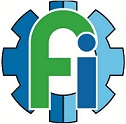Analisis Densitas, Porositas, dan Struktur Mikro Batu Apung Lombok dengan Variasi Lokasi dan Kedalaman
Abstract
Paper ini menjelaskan karakterisasi dan analisis densitas, porositas, dan struktur mikro batu apung Lombok sebagai bahan komposit alam. Batu apung diambil dari tiga lokasi di Lombok yaitu desa Ijobalit (lokasi I), desa Lendang Nangka (lokasi II), dan desa Karang Sidemen (lokasi III) dengan kedalaman galian ± 0,3 meter dan ± 3,0 meter dari permukaan tanah. Batu apung dicuci, dikeringkan, dan dibentuk sampel uji. Sifat densitas dan porositas diuji dengan metode Archimedes. Struktur mikro dikarakterisasi dengan SEM dan hasilnya dianalisis dengan software Image-J untuk mendapatkan nilai porositas dan ukuran luas penampang pori rata-rata. Penelitian ini mendapatkan nilai densitas sebesar (0,610-0,753) gram/cm3, densitas kering sebesar (0,594-0,737)
gram/cm3, densitas jenuh sebesar (1,057-1,148) gram/cm3, dan porositas sebesar (32,03-51,20)%. Nilai densitas tertinggi diperoleh dari sampel lokasi II kedalaman galian ± 0,3 meter dari permukaan tanah. Nilai porositas tertinggi diperoleh dari sampel lokasi III kedalaman galian ± 0,3 meter. Lokasi deposit batu apung mempengaruhi
densitas dan porositasnya. Hasil mikrografi SEM menunjukkan bahwa batu apung Lombok tersusun atas pori-pori yang terdistribusi merata dengan ukuran berbeda-beda. Analisis menggunakan software Image-J mendapatkan porositas sebesar (38,38-56,80)%. Berdasarkan hasil ini software Image-J relevan digunakan untuk menentukan porositas dari mikrografi SEM sampel batu apung Lombok.
Abstract
This paper explains the characterization and analysis of density, porosity, and microstructure of Lombok pumice as natural composite materials. Pumice is taken from three locations in Lombok, there are desa Ijobalit (location I), desa Lendang Nangka (location II), and desa Karang Sidemen (location III) with a depth of excavation ± 0,3 meters and ± 3,0 meters of ground level. Pumice is washed, dried, and formed to be samples test. Density and porosity of sample are tested by Archimedes method. Microstructure of sample is characterized by SEM and the results are analyzed by Image-J software to get porosity and the average pore size of cross-sectional area. This research get natural density is (0,610-0,753) gram/cm3, dry density is (0,594 - 0,737) gram/cm3, saturated
density is (1,057-1,148) gram/cm3, and porosity value is (32,03-51,20)%. The highest natural density value is obtained from the sample of location III with a depth of excavation ± 0,3 meters of ground level. The highest
porosity value is obtained from the sample of location III with a depth of excavation ± 0,3 meters of ground level. The results of SEM micrographs of sample show that Lombok pumice is composed by pores which are
uniformly distributed with different sizes. By using Image-J software, analysis of the SEM micrographs of sample get the porosity value is (38,38-56,80)%. So, Image-J software is relevant used to determine porosity of the SEM micrograph of Lombok pumice sample.
Keywords
Full Text:
PDFReferences
Nandi, Hand-out Geologi Lingkungan: Batuan, Mineral, dan Batubara (Jurusan pendidikan Geografi UPI, Bandung, 2010).
Y. Malik, Handout Batuan: Mengenal Batuan (Jurusan pendidikan Geografi UPI. Bandung, 2004).
M. Soekardi, Petrologi Batuan Piroklastik (Yogyakarta, 2004).
J. Mc.Phie., Doyle, and Allen, Volcanic Texture (Centre for Ore Deposit and Exploration Studies, University Tasmania, 1993).
R.A. Supriadi, dkk., Bahan Galian Batu Apung, Jurusan kimia Universitas Mataram, 2010.
I. Osman, Use of Pumice in Mortar and Rendering for Lightweight Building Blocks (Eastern Mediterranien University, 2010).
B.M. Das, Principles of Foundation Engineering (Second Edition, PWS Kent Publishing Company, Boston, 1990).
L.F. ATHY, Bull. Amer. Assoc. Petrol. Geol., 14, 1-24 (1930).
http://petrowiki.org
C. Kurniawan, dkk., Analisis Ukuran Partikel Menggunakan Free Software Image-J, Pusat Penelitian Fisika, LIPI, 2015.
DOI: http://dx.doi.org/10.12962%2Fj24604682.v12i3.1403
Refbacks
- There are currently no refbacks.

This work is licensed under a Creative Commons Attribution-ShareAlike 4.0 International License.







